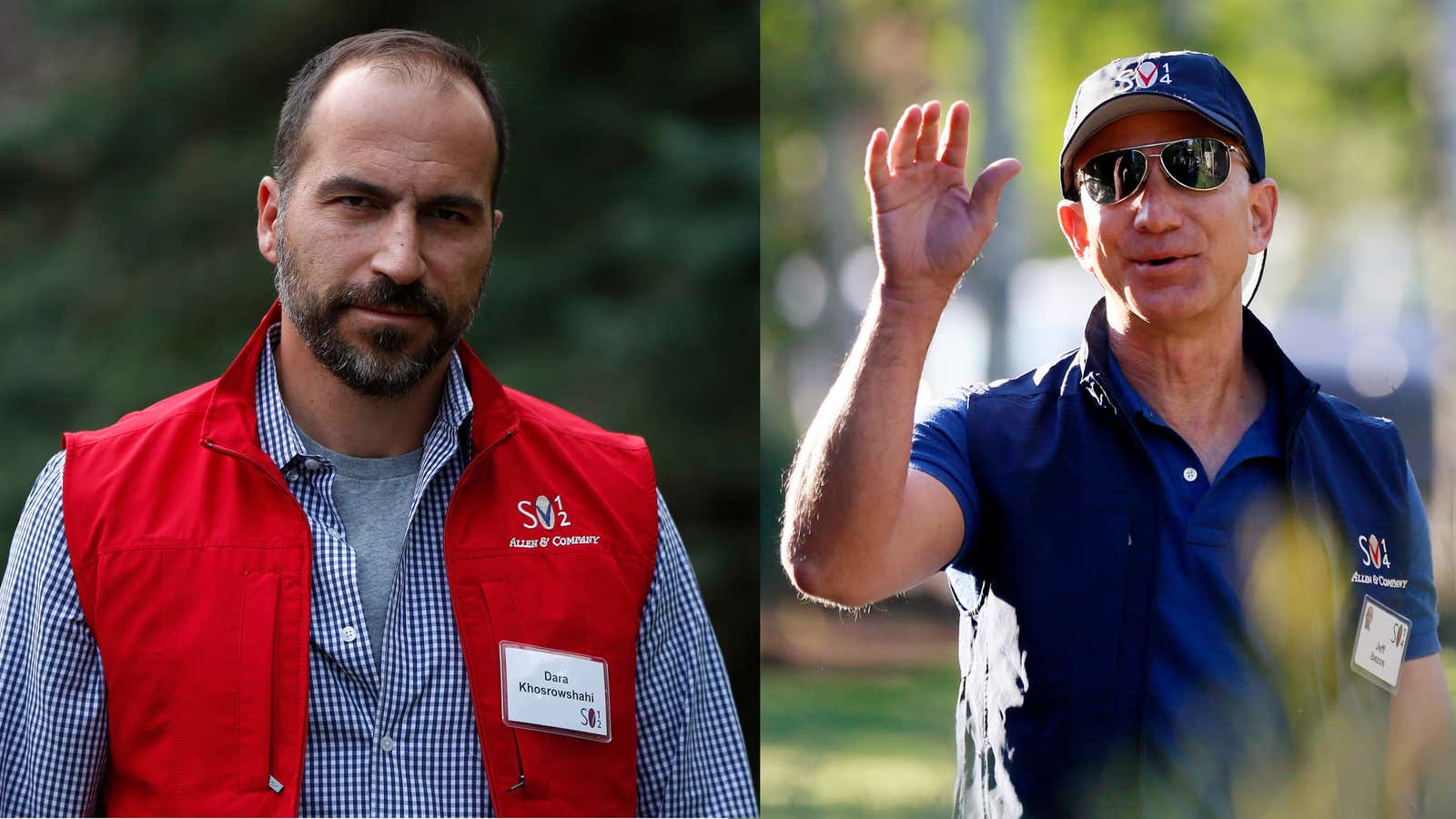Amazon is everyone’s favorite example of a company that lost money to make money. But Amazon has nothing on Uber.
Uber Technologies Inc. today revealed its registration statement for an initial public offering (IPO) widely expected to value the company at $100 billion or more. The filing makes clear the massive losses Uber accumulated on the road to such a lofty valuation, with details previously shared only with private investors and a small circle of media.
In 2018, Uber made $997 million, thanks to a one-time impact of selling its international businesses. The year before that, it lost $4 billion. From 2014 through 2018, the five years for which Uber reported financial data, the company lost a cumulative $6.8 billion.
These losses are on a different scale from losses we’ve seen before. Pets.com, one of the bubbliest companies of the dot-com bubble, lost about $150 million from when it was founded in 1999 to when it collapsed in late 2000. Webvan, another dot-com poster child, lost $610 million from 1998 through 2000.
Amazon, the patron saint of money-losing companies, lost a combined $2.8 billion over its first 17 quarters as a public company, roughly on par with what Uber lost in 2015 alone. (Amazon, for the record, now makes quite a lot of money, with $3 billion in profit in its latest quarter.)
Uber warns in the risk factors section of its filing that it has “incurred significant losses since inception” and expects its operating expenses to “increase significantly in the foreseeable future.”
“We may not achieve profitability,” Uber writes. This sort of boilerplate disclaimer is increasingly common as more private technology companies pursue IPOs without ever turning a profit. (Uber has reported a profit in exactly one quarter, the first of 2018, thanks to the impact of selling two international business units to competitors.)
Where is Uber’s money going?
Cost of revenue: Uber’s biggest cost is cost of revenue, a category that includes insurance costs related to ride-hailing, incentives paid to drivers, and costs incurred with carriers for the Uber Freight trucking platform. In 2018, Uber spent $5.6 billion, or 50% of its revenue, on this category. Cost of revenue increased by $1.5 billion, or 35%, from 2017 to 2018, in part due to an increase in “excess driver incentives.” Uber describes these incentives as any amount paid to a driver that exceeds the revenue earned by that driver (for instance, if a driver’s earnings from a trip exceed the fare for that trip). Excess driver incentives jumped by about $300 million in 2018 from the previous year, largely due to Uber Eats.
Sales and marketing: While most driver promotions go into cost of revenue, rider discounts go into Uber’s next biggest expense, sales and marketing. In 2018, Uber spent $3.2 billion, or 28% of revenue, on this category, up $627 million or 25% from the previous year. The company attributed this increase to $1.4 billion in discounts, promotions, refunds, and credits for customers, up from $949 million in 2017. Uber also puts driver referral bonuses into sales and marketing, and reduced that expense to $136 million in 2018, from $199 million in 2017.
Research and development: A lesser but still significant expense for Uber is research and development, which includes the company’s efforts to develop self-driving cars through its Advanced Technologies Group. In 2018, Uber spent $1.5 billion on research and development, or 13% of revenue, up from $1.2 billion in 2017. Of that $1.5 billion, $457 million was spent on Uber’s autonomous vehicle research, up from $384 million 2017.
Correction: An earlier version of this post said Uber lost, not made, $997 million in 2018.
